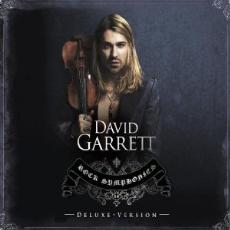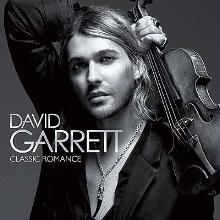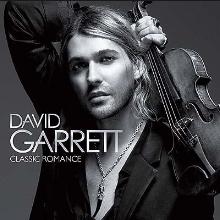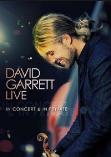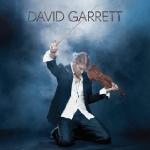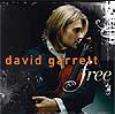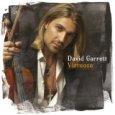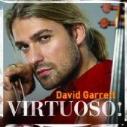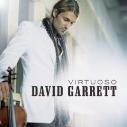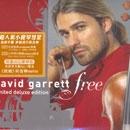 |
||
- DISCOGRAPHY - |
||
David Garrett plays Caprice No 9 op.1 by Niccolò Paganini Source:bongartz |
||||
NEW CD and DVD!!! |
||
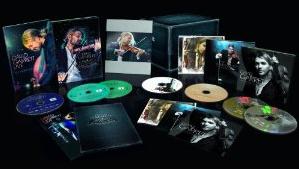 |
||||||
Limited Collector's Box Cd+Dvd, Box-Set |
||||||
"Rock Symphonies" DVD
|
||||||||
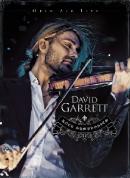 |
||||||||
"David Garrett Live – In Concert & In Private" |
||
"David Garrett" and "Encore" |
||
source: deag |
||
 |
 |
|||||||||||||
 |
 |
 |
||||||||||||
 |
 |
|||||||||||||
 |
||||
 |
||||
 |
 |
 |
 |
 |
 |
 |
||||||||
************ |
||
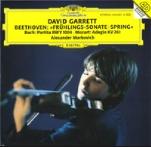 |
||||
LUDWIG VAN BEETHOVEN Sonata for Piano and Violin no in F major, op.24 “Spring” JOHANN SEBASTIAN BACH Partita for Violin solo no.2 D minor, BWV 1004 WOLGANG AMADEUS MOZART Adagio KV 261
DAVID GARRETT, Violin ALEXANDER MARKOVICH, Piano
It is the first recording of David. He was just 13! “Anyone listening to this recording without knowing that it is the debut of a very young player might assume that the performer was a mature, experienced and polished artist.” “Take the Mozart Adagio and we hear that sense of proportion and sweetness of melody in the performance that we expect with Mozart.” Or Beethoven’s “Spring Sonata”, by no means and undemanding piece: every note is not just beautiful but also meaningful.” “Can a 13-year-old really play the violin with this degree of mastery?” “The answer is provided by the authority of his performance of Bach’s Partita in D-minor... To hear the impressive seriouness, the persuasive interpretation and the emotional intensity is astonishing.” (source: the books of the CD: Wol-Eberhard von Lewinski (translation: Mary Whittall)) |
||
 |
||||||
WOLFGANG AMADEUS MOZART Concerto for Violin and Orchestra in D major, K.271a (271i) Concerto for Violin and Orchestra in D major, K.218 Sonata for Piano and Violin in B flat major K.454
DAVID GARRETT, Violin ITAMAR GOLAN, Piano The Chamber Orchestra of Europe CLAUDIO ABBADO
The Violin Concerto no 3 (KV 218) was recorded when David was 13. Take note that the Cadences of the Adagio and the Rondo are signed “David Garrett”! The Violin Concerto KV 271a and the Sonate KV 218 were recorded when he was 14. The record with Claudio Abbado was a “politic decision”. Indeed, he played with a great man but he regrets that he was not supported by him. (source: http://www.weigold-boehm.de/kuenstlerliste/index.htm “Every writer on the D major Concerto K.271A (271i) has to wrestle with the problem of its authenticity. Mozart’s holograph has not survived, and the copy made by the French violinist Eugène Sauzay, which dates the work “Salzburg, 16 July 1777”, almost certainly contains numerous editorial alterations and wilful changes to both the orchestral and solo parts - if we assume the existence of an earlier original said to have been owned by the conductor Habeneck. But in spite of the many questions raised by the piece, as stylistic explanation places Mozart’s authorship at least within the bounds of possibility." (source: Harmtmut Fladt, translation: Stewart Spencer) My feeling... The David’s playing of the very beautiful and too few heard Concerto K 271a is, in my opinion, quite exceptional. He has an unbelieved mastery and maturity. We are astonished to know that he recorded this Concerto at the age of 14. |
||
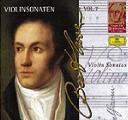 |
||||||
LUDWIG VAN BEETHOVEN Violin Sonatas Vol.7
GIDON KREMER, Violin MARTHA ARGERICH, Piano
YEHUDI MENUHIN, Violin WILHEM KEMPF, Piano
DAVID GARRETT, Violin BRUNO CANINO, Piano 6 Six German Dances, WoO 42
David was 15 years when he recorded this piece. I like it. It is very cool and pretty. “The authenticity of this slender work was disputed for a long time after the composer’s death, until the Beethoven scholar Gustav Nottebohn identified sketches for it dating from 1796.From a study of its texture, one can see that it can be performed as a piano solo; the violin part, utterly expendable at the beginning, gradually asserts itself and contributes to the counterpoint in the last two dances.” (source: book of the CD) |
||
 |
||||
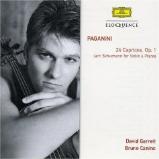 |
||||
 |
||||||
NICOLO PAGANINI 24 Caprices for Violin
Piano accompaniment ROBERT SCHUMANN (Nos 1-23)
DAVID GARRETT, Violin BRUNO CANINO, Pian The 24 Caprices by Paganini are known to be the most hard works ever written for the violin, even qualified “ possessed of the devils”. “In his Opus 1, the 24 Capricci per violino solo issued by Ricordi of Milan in 1820, he codified his innovations, although he avoided the use of harmonics, normally one of his favorite tricks. His Caprices are tests of every kind of bowing, especially the various strokes in which the bow has to jump or bouce. The left hand is tested by extensions, octaves, tenths, twelfths, triple stops, double trills and the celebrated Paganini left-hand pizzicato. It has been said that any vioinist who can play all the Caprices as written can play anything. Not for nothing did paganini dedicate them “Agli Artisti” (to the Artists). At the same time, the Caprices ate not mere etudes. They can be used to strengthen particular weakness of technique but they are ral music and express the character of the violin as do few other works in the literature. In no.24, paganini himself realized whata pregnant theme he had invented and wrote some extremely difficult variations, incuding one (the ninth) for left-hand pizzicato in combination with the bows; in the third variation he used octaves particulary atmospherically and in the sixth variation he wrote a famous passage in tenths. (source cf CD: Tully Potter) David was 15 years when he recorded this CD, working a lot, day and night. He didn’t see his friends anymore. He was totaly haunted by Paganini. He went over his limits, until to ruin his hands and his health. He said he had to be stopped. But the result is fabulous! Like an angel with a stupendous talent, David Garrett brings out the 24 caprices from the Paganini's Inferno to transform them in Paradise’s sweetness. He offers them to taste one by one on a crystal-tray. It is fine! It is beautiful! It is good! We take them again. The violinist has an exceptional musical mastery. He makes sing, laugh, cry, shout, run, dance his violin with an easiness and a technicality that takes our breath away. What a sound! What a virtuosity! |
||
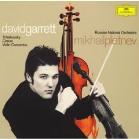 |
||||||
PETER TCHAIKOVSKY Concerto for Violin and Orchestra in D major, op.35
JULES CONUS Concerto for Violin and Orchestra in E minor
DAVID GARRETT, Violin Russian National orchestra MIKHAEL PLETNEV
David recorded these Concerts at the age of 17. He received “le Diapason d’or” for the performance of the Tchaikovky Concerto. “The assurance, the purity of his lyricism, and his technique is first rate. His reading of Tchaikovsky ‘s Opus 35 was had a genuine lyrical dimension and touching sense of poetry…He brings to this famous concerto a vision that is vibrant and full of emotion - reminiscent of the great Russian masters of the past. The passionate concerto of Julius Conus, immortalized by Heifitz, was even more captivating… his admirers will find in Garrett’s conviction, tone and vibrato an indisputable link with his prestigious elder. Garrett forges his own style and defends it with panache and talent; his maturation is spectacular.” (Jean-Michel Molkhou, Diapason, March 2002)
He tells in the CD’s book that the record in Moscow was also an opportunity him to get to discover his own Russian roots. His intensive study of the personality and the instability of Tchaikovsky that is also present in his music, conveyed his interpretation. He was very overwhelmed by the great hall of the Moscow Conservatory and he was enchanted by the unique acoustiques. He could practice in the ideale conditions and he said finely: “When the final note sounded on that evening, Tchaikovsky’s spirit seemed to be hovering around us...” David told that Mikhael Pletnev is a wonderful person and a funny guy. After the work, he would tell jokes and do magic tricks with cigarettes and cards.
Concerto for Violin and Orchestra in D major, op.35 “In the slow movement Garrett employs more sultry, seductive colours. The finale is exciting and articulate if, surprisingly, given with ’traditional’ cuts.” ...”the young David Garrett shows a strong musical personality, alternating smouldering passion and overt virtuosity. Garrett plays fast passages at daringly swift tempos; his quick vibrato brings to mind the young Heifetz. Indeed his whole performance has that expressive freedom we find in that great violinist of yesteryear, his phenomenal technique placed at the disposal of his interpretation." (David Denton, The Strad, May 2002) “There can be no doubt: that’s Tchaikovsky, through and through, and one of the best-ever interpretations of this opus. Absolutely breathtaking!” (sources: Pizzicato, November 2001 http://www.david-garrett.de/press.html )
Concerto for Violin and Orchestra in E minor
“David Garrett also interprets the violin concerto by Jules Conus with such exciting results, in such brilliant style and with such a sense of mutual compatibility with his conductor that one can’t help but be astonished at such levels of congeniality. A world aglow with colour, ablaze with passion, a sea of truly experienced music, it is, all in all, an overwhelming experience…it is a testimony of one hundred percent commitment…the violinist is once again on peak form.” (Pizzicato, November 2001)
Jules Conus (in Russian Yuli Eduardovich Konyus) was born in Moscow to parents of French and <italian on 30 January 1869, and like so many Russsian musicians he and his two brothers were educated at that city’s legendary Conservatory. He moved in artistic circles and had close contacts with collagues such as Tchaikowky and Rachmaninov. Later his life’s journey took him foreign parts, including Paris, where he taught at various music academies, but after 20years abroad he returned in 1939 to his native city. In 1896, 15 years after the premiere of Tchaikovky’s, Conus wrote his Violin Concerto. Still little known, it is the only large concert piece in a compositional output consisting mainly of pedagogical works for the violin. Conus himself was the soloist at the Concerto’s premiere in Moscow in 1898, and as one would expect of a violin virtuose, he infused the work, a single movement in three sections, with technical brilliance and virtuosity. It is also a thoroughly “Russian” piece, full of colour and lyrism. (source: CD’s book, translation: Richard Evidon) *** This recording was released in November 2001, and is available as a CD and MP3 download from the Deutsche Grammophon website. I don’t remember much fuss being made at the time, other than that in some circles David Garrett was soon to become labelled as classical music’s David Beckham. The sultry headshots in the booklet do nothing to dispel this image, but despite destroying his valuable violin during a nasty fall at the Barbican Centre recently and being called a ‘clumsy oaf’ in The Guardian, this violinist has come a long way since then. Something of a child prodigy, Garrett was playing solos from the age of nine, and soon became an attractive proposition for big name conductors and orchestras, recording his first DG album aged 13. He would have been around 17 when the Tchaikovsky/Conus recordings were made. The isolation which his solo career created something of a crisis in Garrett’s life not so very long after this recording was made, but I am glad to see he is now carving a healthy international career both as a soloist and chamber musician touring all over the world. David Garrett’s playing on this recording is gorgeous throughout. His purity of tone in the upper registers is a delight, and the tenderness of the quieter passages can have a vulnerable quality which is winning, but can be quite confrontational if the emotion of the music is already too close for easy comfort. He did of course have the famous ‘San Lorenzo’ violin at his disposal at this stage in his career, and the brightness and singing qualities of the instrument suit the heart-on-sleeve musicianship of the young artist. His vibrato is intense and swift, which I much prefer to the slow sloppy variety, but it sometimes does have a width which for me can be a little over-persistent at times, though this is very much a matter for personal taste. I suppose the real lack is of any genuine excitement in the performance as a whole. There are some swathes of orchestral passagework which sound surprisingly uninvolved. The tempo of the first movement is marked Allegro moderato, but my feeling is that the ‘moderato’ gets too big a bite of the cherry. Garrett’s own ancestry has its roots in Russia, and there is no denying his emotional connection with the music. In the booklet, he describes his sensations and feelings about performing in the Moscow Great Hall, and the experience clearly made a deep impression. The central Canzonetta certainly has a fine, poetic feel to it, and the passion I felt lacking a little in the first movement is certainly more present in the Finale. Garrett’s playing digs less deeply than some in this music, and at this stage his tone and articulation has a light, perhaps almost feminine feel to it. This I however prefer to any kind of mannered attempt to draw throaty grit from music which often has a similarly balletic feel to it as something like Swan Lake, with all its French grace and stylistic elements. That said; the Russian-ness of the music is not necessarily the foremost characteristic which springs to mind, in the solo playing at least. Jules Conus was a composer unfamiliar to me. His original name Yuli Eduardovich Konyus betrays Russian origins, although, born in Moscow, his parents were of Italian and French descent. His Concerto in E minor is every bit as romantic as that of Tchaikovsky, and indeed owes not a little to that composer is some of the melodic shapes, and in the orchestral palette of colour and emphasis which Conus uses. There are some hints of other composers, Dvo?ák and Rachmaninov to name a couple: you may have other associations, but whatever the influences this concerto is more than the sum of its parts, and has a strength of expression which is forcibly and more than convincingly conveyed by both orchestra and soloist. The piece is lacking only in the thematic distinctiveness by which the greatest concertos are often remembered – the memorable ‘hook’ which makes them a hit. You probably won’t come away humming any of the tunes after a first hearing, but I can assure you that you will be coming back to it if romantic concertos are your cup of tea. Technically the recording is of course excellent, although there is a slight drop in level just before the cadenza for some reason. The cover art is intriguing. To me it looks as if Garrett is being beaten with a cello, with very negative results both for that instrument, and possibly for the soloist’s left shoulder. Competition is fierce in the ever-expanding world of Tchaikovsky’s Violin Concerto, and in many ways the biggest USP for this disc is the Conus concerto. With the Russian National Orchestra on its home turf in the grand acoustic of the Moscow Consevatory’s Great Hall and in good form under their founder Mikhail Pletnev this was always likely to be more than an also-ran, although this orchestra also accompanies Christian Tetzlaff on his excellent recording of the Tchaikovsky on a Pentatone SACD with Kent Nagano. David Garrett’s David Garrett’s youthful performance may not be an absolute first choice, but if you want the Conus then you are unlikely to be disappointed by the Tchaikovsky. source: Dominy Clements http://www.musicweb.uk.net/classRev/2008/June08/Tchaikovsky_Garrett_4714282.htm
|
||
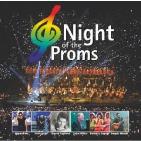 |
||||
In this CD, David plays a piece of the Beethoven Violin Concerto (3’34”) and the Csardas by V. Monti (3’43”). He finely accompanies John Miles in “Everybody’s Got To Learn Sometime” (4’48”)
|
||
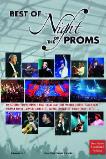 |
||
You can see David playing this famous Beethoven Violin Concerto (4’03”) |
||
 |
||||||
WOFGANG AMADEUS MOZART Violin Concert K 271a (271i) 1.allegro maestoso Chamber Orchestra of Europe CLAUDIO ABBADO
JOHANN SEBASTIAN BACH Partita in d minor bwv 1004: 4 giga
LUDWIG VAN BEETHOVEN Sonata in f major op.24 “spring” 1.allegro ALEXANDER MARCKOVICH, piano
WOLGANG AMADEUS MOZART Sonata in b flat major K 454 3.allegreto
NICOLO PAGANINI Caprices op.1 piano accompaniment: ROBERT SCHUMANN n°1 in e major: andante n°4 in c minor: maestoso n°9 in e major: allegretto BRUNO CANINO, piano
JULES CONUS Violin Concerto in e minor: adagio Russian national orchestra MIKHAIL PLETNEV
NICOLO PAGANINI Caprices Op.1 n°6 in g minor: agitato n° 13 in b flat major: allegro
PETER TCHAIKOVKY Violin Concerto in d major op. 35 3. finale: allegro vivacissimo Russian national orchestra MIKHAIL PLETNEV
NICOLO PAGANINI caprice op.1 n° 24 in a minor
This CD was released in 2002, after the David’s performance at the “Night of the Proms”. It is a kind of jumble of his CDs released before.
|
||
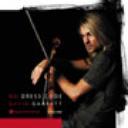 |
||||
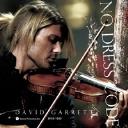 |
||||
new picture! |
||
J.BRAHMS F.A.E. Violin Sonata “Scherzo” P.SARASATE Spanish Dances for Violin and piano Op.22-1 Romanza Andaluza V.MONTI Czardaz F.KREISLER Caprice Viennois OP.2 N.PAGANINI Caprice for Violin Solo N)13 S.FOSTER Jeannie With the Light Brown Hair F.KREISLER Tempo di Minuetto P. SARASATE Introduction and Tarentelle Op.43 W.A.MOZART Sonata for Piano and Violin in B flat, K.378
DAVID GARRETT, Violin JOHN MILBAUER, Piano
David recorded this CD in Tokyo in 2005. It is actually sold only in Japan. The title “no dress code” refers to his unconventional way of dressing. |
||
 |
||
 |
 |
 |
 |
 |
||||||
David Garrett Free David Garrett Virtuoso |
||
The arranging and the composing are made by David. A web site is released where David naturally gives his biography. He tells about his pieces' choice. http://www.decca.com/features/davidgarrett/ http://www.deccaclassics.com/newsandnewreleases/march2007/4758039.html
************ We would like also to hear him in Sibelius, Bruch, Schumann, Bartok, Glazunov, Prokofiev, Chostakovitch and many others. His repertoir is so much interesting...
************ sources: |
||
released in UK! |
||
A new CD "free" (3 CDs) released in Hong Kong. |
||
WOFGANG AMADEUS MOZART: Violin Concert K 271a (271i) LUDWIG VAN BEETHOVEN: Sonata for Piano and Violin no in F major, op.24 “Spring”top |
||||
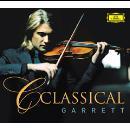 |
||||
|
||


